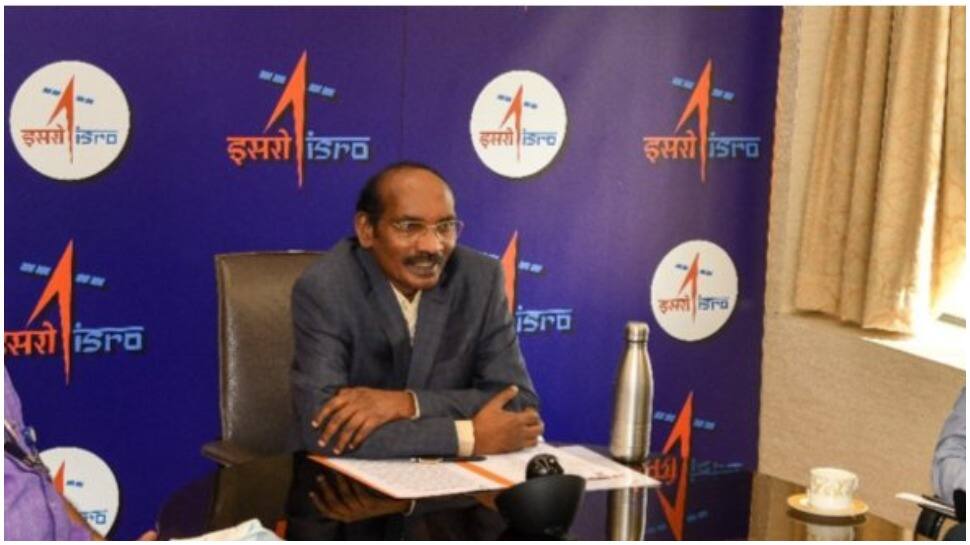ISRO is developing hack-proof communication, robots, self-healing materials, and debris-free rockets and satellites.

Tuesday, November 23, 2021 | Chimniii Desk
Key Highlights
- The Indian Space Research Organisation (ISRO) is developing around 50 cutting-edge technologies to meet the country's technological demands in the future decades.
- Quantum communications, space debris mitigation technologies, robotic arms, interplanetary rovers, and other technologies are among them.
- R. Umamaheswaran, ISRO's scientific secretary, listed quantum radars, low-temperature lithium-ion cells that can power subsystems in sub-zero temperatures, and space-based solar power as disruptive technologies.
- He went on to say that ISRO had developed a "Vision 2030" based on suggestions from its scientists and engineers.
- In order to better comprehend the earth's resources, ISRO will apply artificial intelligence, machine learning, and big data analysis to make better use of data from satellites.
Advertisement
The Indian Space Research Organisation (ISRO) is developing around 50 cutting-edge technologies to meet the country's technological demands in the future decades.

Quantum communications, space debris mitigation technologies, robotic arms, interplanetary rovers, and other technologies are among them. At the inaugural session of the ISRO's Directorate of Technology Development and Innovation (DTDI) conclave, top officials from the space agency enrolled these innovations.
Dr. K. Sivan, chairman of ISRO, stated at the ceremony that DTDI was established as a dedicated Directorate at ISRO headquarters to sow the seeds of futuristic and disruptive technology for the space sector.
He went on to say that the technologies were being created based on global trends and a SWOT analysis of their potential uses. ISRO, Indian business, and academia would collaborate and devote resources to bring these innovations to fruition, according to Dr. Sivan, who is also the secretary of the Department of Space.
"In the previous three years, ISRO has launched 46 technical projects, including quantum communication, space debris mitigation technologies like as self-eating rockets, self-vanishing satellites, and robotic arms to gather space debris," added Dr Sivan. He went on to say that quantum cryptography, as well as satellite-based quantum communication, might enable unconditional data protection in secure communications.
There is an increasing need for minimising this difficulty, which includes space debris from destroyed satellites, overpopulation of space by defunct and operating spacecraft, and spent rocket stages.
A global effort is underway to improve re-usable rocket operations, permit in-space refuelling and satellite servicing, reduce, collect, and remove space trash, and develop materials that do not represent a long-term threat to other space assets. ISRO's concept for self-eating rockets and self-vanishing satellites, as well as robotic arms, must be viewed in this light.
Quantum mechanics is a physics theory that describes the physical aspects of nature at the atomic and subatomic level. Classical physics, on the other hand, describes many features of nature on a small (macroscopic) scale.
Sensitive data is traditionally transferred via cable or other ways, along with the digital keys required to decrypt it. This is sent through a series of electrical or optical pulses that represent 0s and 1s (bits). However, without the sender's or receiver's awareness, this is vulnerable to hacking.
Particles (light photons) are sent in quantum communication in qubits (quantum bits), which have both a 0 and a 1 value at the same time. In order to eavesdrop on it, a hacker must measure these qubits, which leaves a trace that may be detected and alarms the transmitter and receiver. This is predicated on the idea that you can't measure a quantum state without upsetting it. If qubits are disrupted, both parties are notified and the exchange can be terminated.
R. Umamaheswaran, ISRO's scientific secretary, listed quantum radars, low-temperature lithium-ion cells that can power subsystems in sub-zero temperatures, and space-based solar power as disruptive technologies.
He went on to say that ISRO had developed a "Vision 2030" based on suggestions from its scientists and engineers.
Advertisement

space robots

drone net technology

eco-friendly propulsion
"General purpose" was one of them. Intelligent space vehicle, robotic arm in space, spider rover, AI-enabled spacecraft, and Lattice composite structure." Humanoid robots, in-situ propellant production for interplanetary exploration, planetary rock sampling, intelligent space vehicle, robotic arm in space, spider rover, AI-enabled spacecraft, and Lattice composite structure."
On the status of these technologies, he noted that some were still in the feasibility research stage, while others had already begun development in the lab.
In order to better comprehend the earth's resources, ISRO will apply artificial intelligence, machine learning, and big data analysis to make better use of data from satellites.
"We're looking at ensuring preparedness for celestial and anthropogenic challenges, developing AI-based models for on-board anomaly detection in spacecraft, Spatio-temporal weather prediction, groundwater level prediction, generation of land cover maps, AI-driven quality inspection, and AI-driven agriculture," said Dr. Umamaheshwaran.
ISRO hopes to bring together technology developers from throughout the country with potential users through efforts like DTDI connect and DTDI extend, allowing for customised, ready-to-incorporate products.
The country and its rapidly-growing advanced requirements are likely to benefit greatly from the spin-offs from such technical products and services.
Advertisement